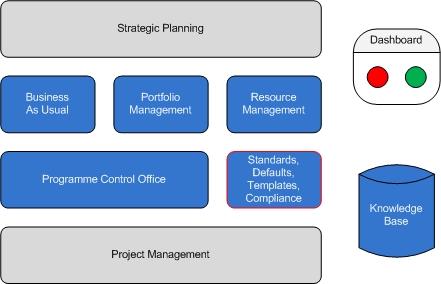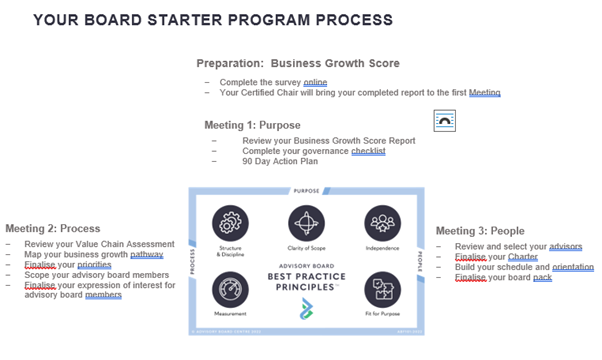Project Governance
To better understand the subject at hand, it is important to provide some background for context. In this case, we will delve into the concept of project governance and its significance.
Project governance refers to the framework and practices that organizations employ to ensure the successful execution of projects. It involves establishing clear roles and responsibilities, defining communication channels, managing risks and issues, and maintaining accountability throughout the project lifecycle. Effective project governance plays a vital role in driving project success rates and aligning project activities with organizational goals, and is particularly important where several projects are running and may be competing for the same limited resources.
By implementing appropriate project governance strategies, organizations can enhance their project management capabilities and achieve desired outcomes.
Project governance refers to the framework that encompasses your projects and aims to establish clear lines of responsibility, accountability, and oversight mechanisms. Its primary objective is to enhance the success rates of projects by providing key stakeholders with comprehensive visibility and control over their project portfolio.
Project governance typically operates at a higher level than project management, functioning outside the boundaries of individual projects. Its purpose is to standardize governance structures and processes, ensuring efficient communication throughout the entire organization. This standardization streamlines task dependencies, such as approvals, and enables a clear understanding of the strategic value of activities.
The primary value of project governance lies in optimization rather than simply resource utilization. The robust control and visibility offered by effective project governance systems enable efficient resource allocation that not only achieves results but also aligns with strategic objectives. Consequently, effective project governance is essential at the project, program, and portfolio levels, and it should not be solely entrusted to a single business unit. It needs to be embraced and supported by the entire enterprise. While implementing project governance without appropriate tools can be challenging, once established correctly, it delivers significant value to the organization.
Effective project governance offers several key benefits, including:
- Clarity and Accountability: By implementing project governance, organizations can establish clear lines of responsibility and accountability for projects. This ensures that everyone involved understands their roles and responsibilities, leading to improved project outcomes.
- Enhanced Project Scope Management: Project governance helps in effectively managing project scope by defining and controlling the boundaries of the project. This prevents scope creep and ensures that the project stays focused on its objectives, ultimately improving project delivery.
- Efficient Project Issue and Risk Management: With project governance in place, organizations can effectively identify, assess, and manage project issues and risks. This proactive approach allows for timely mitigation of potential problems, reducing their impact on project success.
- Streamlined Information Dissemination and Communication: Project governance facilitates efficient information dissemination and communication throughout the organization. By standardizing communication channels and processes, relevant project information reaches stakeholders in a timely manner, promoting collaboration and informed decision-making.
These four benefits highlight the value of effective project governance in ensuring project clarity, scope management, issue and risk mitigation, and streamlined communication for successful project delivery.
Project governance varies across organizations, and there is no universal model that fits all. Nevertheless, a typical project governance structure consists of seven key components and five key stages, applicable to organizations of any size or shape. These components and stages are further detailed below:
- Suitable Governance Model: Organizations need to establish a governance model that aligns with their specific needs and objectives. This model outlines the overall approach to project governance and sets the foundation for effective decision-making and oversight.
- Defined Accountability and Responsibility: Clear lines of accountability and responsibility must be established for each project. This ensures that individuals or teams are aware of their roles and obligations, leading to effective project management and delivery.
- Proper Stakeholder Engagement: Engaging relevant stakeholders throughout the project lifecycle is essential for successful project governance. By involving key stakeholders, organizations can gather input, manage expectations, and foster collaboration, resulting in better project outcomes.
- Clear Communication Plans: Effective communication is critical for project governance. Organizations should develop comprehensive communication plans that outline the channels, frequency, and content of communication. This ensures that project information is disseminated to the right stakeholders at the right time.
- Risk and Issue Management Processes: Robust processes for identifying, assessing, and managing risks and issues are vital components of project governance. Organizations should implement systematic approaches to mitigate risks and address issues promptly, minimizing their impact on project success.
- Quantified Project Assurance: Project assurance involves monitoring and assessing project performance against predefined criteria. By quantifying project assurance, organizations can evaluate the project’s progress, quality, and compliance with standards, ensuring project success.
- Project Management Control Process: A structured project management control process is necessary for effective project governance. This process includes activities such as project planning, monitoring, and control, enabling organizations to track project progress, manage resources, and make informed decisions.
- Initiation: The project governance process begins with project initiation, where the organization identifies the need for the project, defines its objectives, and assesses its feasibility.
- Planning: In the planning stage, organizations develop comprehensive project plans, including defining project scope, identifying resources, creating schedules, and outlining communication and risk management strategies.
- Execution: The execution stage involves the actual implementation of the project plan. Project governance ensures that the project is executed according to the defined processes and that progress is monitored and controlled effectively.
- Monitoring and Control: Organizations continuously monitor and control the project’s progress, comparing it against predefined metrics and milestones. This stage allows for timely identification of deviations, enabling corrective actions to be taken promptly.
- Closure: The project governance process concludes with project closure, where the project’s outcomes are reviewed, lessons learned are documented, and project closure activities, such as final reporting and stakeholder feedback, are conducted.
To maximize the effectiveness of project governance, it is essential to establish frameworks that will serve as the guiding principles for all future project activities. These frameworks should include clearly defined roles and responsibilities, as well as well-structured communication plans. The PMO can help in evaluating your organization’s current context and provide guidance on selecting the project governance framework that aligns best with your specific needs. It is important to note that in project governance, more is not always better, and we will elaborate on this concept further.
Follow the step-by-step approach below to ensure all elements are considered and the right action plan is developed and can be effectively delivered.
- Step 0: Preparation: complete an online diagnostic survey to enable a robust conversation around what’s right for your business
- Step 1: Purpose – define the purpose and realistically assess the current state.
- Step 2: Process – business cycle mapping, value chain assessment, business priorities and structure options
- Step 3: People – team profile, meeting structure, documentation – time line and action plan
By following these stages and implementing effective project governance frameworks, organizations can optimize project outcomes and achieve successful project delivery.
There are two common concerns that often deter people from embracing project governance:
“It will just waste time and slow us down”
Critics of project governance argue that it hampers progress and consumes valuable time. However, considering project governance as a hindrance is akin to perceiving traffic lights as slowing down traffic. While it may appear that progress is momentarily halted, traffic lights are crucial for preventing bottlenecks and catastrophic congestion. Similarly, projects can run without a governance system, but the lack of task prioritization can lead to resource mismanagement and project delays. Although implementing project governance may seem time-consuming initially, it actually prevents issues that could otherwise derail the success of your entire project, program, or portfolio.
“Our organization runs on Agile. We don’t need project governance”
A common misconception is that governance is at odds with agile principles. However, this is not accurate. The Scaled Agile Framework (SAFe) recognizes the importance of “lean governance” and “lightweight governance.” Numerous examples exist where governance structures enable agile delivery, such as solution trains, agile release trains, and program increments. Additionally, regardless of whether a waterfall or agile approach is employed, there is always a level of senior leadership decision-making that influences the project approval process.
By addressing these concerns, it becomes evident that project governance is not a hindrance but rather a necessary framework to ensure project success, mitigate risks, and optimize resource utilization, regardless of the project management methodology employed.
As outlined above, effective project governance does not adhere to a universal approach, and certain practices may not align with your organization’s specific context. However, regardless of the level at which it is implemented, project governance provides valuable direction, structure, and mechanisms that greatly enhance project success rates. It offers a framework through which projects can be effectively managed, ensuring clear objectives, efficient decision-making, and improved project outcomes. By tailoring project governance to your organization’s needs, you can harness its benefits and optimize project performance.

The PMO’s Project Advisory Board Starter Program
The PMO’s Project Advisory Board Starter Program (the Program) is a step-by-step plan to quickly establish a framework to manage project governance in your business. …but the most important day of this program is the day you start to put the results of your work into action.
There are three stages to the Program. The most common approach is a short/sharp/focused 3 week process with three 1/2 day sessions, each followed by specific activities for you to complete. Other options on how you could run your program can be discussed your consultant.
Throughout the program, your consultant will guide you through each stage. It is important that you are open and honest, in order to ensure that you receive the maximum benefit from investing in this process.

OK, so what happens after the initial program?
Following the Project Advisory Board Starter Program, you may continue to work with your consultant in managing your governance pathway and establish your Project Advisory Board. Even if you don’t go ahead with a formal project governance structure, we expect that you will have gained significant value from evaluating your internal governance, management and reassessing your business priorities.
…so, if this sounds like the right place to start, please Contact Us today and one of our consultants will be in touch.